
Playacar: The Jewel of Playa del Carmen
Discover Playacar in Playa del Carmen: A tranquil, luxurious neighborhood with pristine beaches, lush greenery, and activities for all tastes, just minutes from the city center.
Welcome to Playacar, a serene and luxurious enclave nestled in the heart of Playa del Carmen, Mexico. This exclusive neighborhood is renowned for its pristine beaches, crystal-clear waters, and lush greenery, making it a haven for relaxation and natural beauty. As you stroll through Playacar, you'll be captivated by its charming blend of modern amenities and traditional Mexican architecture. For those seeking adventure, Playacar offers an array of activities that cater to all interests. Whether you're into water sports, exploring ancient Mayan ruins, or simply lounging on the beach with a good book, there's something for everyone. The area is also home to some of the best golf courses in the region, providing a perfect backdrop for a leisurely day on the greens. Food lovers will be delighted by the culinary scene in Playacar. From authentic Mexican eateries to upscale international restaurants, the neighborhood boasts a diverse and delicious array of dining options. Don't forget to explore the local markets and boutique shops, where you can find unique souvenirs and artisan crafts to take home as a memento of your trip.
Local tips in Playacar
- Bring comfortable walking shoes as the neighborhood is best explored on foot.
- Visit early in the morning for a peaceful beach experience before the crowds arrive.
- Don't miss out on the local markets for unique artisan crafts and souvenirs.
- Try out the local cuisine at small, family-owned eateries for an authentic taste of Mexico.
- Book your golf tee times in advance, especially during peak tourist season.
Playacar: The Jewel of Playa del Carmen
Welcome to Playacar, a serene and luxurious enclave nestled in the heart of Playa del Carmen, Mexico. This exclusive neighborhood is renowned for its pristine beaches, crystal-clear waters, and lush greenery, making it a haven for relaxation and natural beauty. As you stroll through Playacar, you'll be captivated by its charming blend of modern amenities and traditional Mexican architecture. For those seeking adventure, Playacar offers an array of activities that cater to all interests. Whether you're into water sports, exploring ancient Mayan ruins, or simply lounging on the beach with a good book, there's something for everyone. The area is also home to some of the best golf courses in the region, providing a perfect backdrop for a leisurely day on the greens. Food lovers will be delighted by the culinary scene in Playacar. From authentic Mexican eateries to upscale international restaurants, the neighborhood boasts a diverse and delicious array of dining options. Don't forget to explore the local markets and boutique shops, where you can find unique souvenirs and artisan crafts to take home as a memento of your trip.
Iconic landmarks you can’t miss
Portal Maya
Discover the enchanting Portal Maya, a stunning monument celebrating Mayan heritage amidst the vibrant atmosphere of Playa del Carmen.

Letras Playa del Carmen
Discover the colorful Letras Playa del Carmen, a must-visit photo spot that captures the vibrant spirit of this tropical paradise.

Xaman - Ha Aviary
Discover the vibrant world of birds at Xaman - Ha Aviary, a serene oasis in Playa del Carmen perfect for nature lovers and birdwatching enthusiasts.

Playa del Carmen Archeological Site
Explore the ancient Mayan ruins at Playa del Carmen Archaeological Site, a captivating historical treasure in the heart of Riviera Maya.

Playacar Mayan Ruinas
Explore the Playacar Mayan Ruinas, an archaeological treasure in Playa del Carmen, where ancient history meets serene beachfront beauty.

Playa del Car
Experience the tranquil beauty of Playa del Car, a paradise of soft sands and clear waters in Playa del Carmen, Quintana Roo.

Mirador de Playacar
Experience breathtaking views and serene surroundings at the scenic Mirador de Playacar in Playa del Carmen, a must-visit for nature lovers.

Playacar playa
Discover the stunning shores of Playacar Playa, a tropical playground ideal for families and beach lovers with activities for every age.

Old Lady Statue
Discover the Old Lady Statue in Playacar, Playa del Carmen – a stunning cultural landmark embodying local heritage and artistry amidst lush surroundings.

Statue of the Mexican Revolutionary
Discover the Statue of the Mexican Revolutionary in Playa del Carmen, a powerful symbol of resilience and history surrounded by natural beauty.

Unmissable attractions to see
Xaman - Ha Aviary
Explore the lush landscapes of Xaman - Ha Aviary in Playa del Carmen, a haven for bird lovers and nature enthusiasts alike.

Old Lady Statue
Discover the Old Lady Statue in Playa del Carmen, a captivating symbol of local culture and artistry nestled in the lush landscapes of Playacar.

Essential places to dine
Casa Sofia
Discover Casa Sofia: An Italian gem in Playa del Carmen offering delicious breakfasts and authentic pizzas in a cozy setting.

Lara&Luca Playa del Carmen
Experience the best breakfast and delightful treats at Lara&Luca Playa del Carmen - A culinary haven for food lovers.
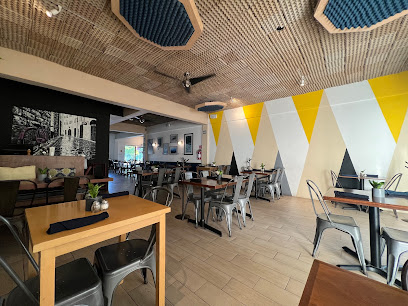
Perché No
Discover authentic Italian flavors at Perché No in Playa del Carmen – where every bite feels like a trip to Italy.

Así Restaurant & Beach Club
Savor fresh seafood with breathtaking ocean views at Así Restaurant & Beach Club in Playa del Carmen.

Don Sirloin - Playacar
Experience authentic Mexican cuisine at Don Sirloin in Playacar, where flavorful dishes meet vibrant atmosphere for an unforgettable dining adventure.

Viva Palapa
Experience authentic Mexican cuisine at Viva Palapa in Playa del Carmen - where flavor meets vibrant culture.

Mia Playacar Restaurant
Experience authentic Mexican cuisine at Mia Playacar Restaurant in Playa del Carmen's scenic Playacar neighborhood.

Jungle GastroBar
Experience authentic Mexican cuisine surrounded by tropical vibes at Playa del Carmen's Jungle GastroBar – a must-visit for food lovers.

Santo Rollo Playacar Center
Experience exquisite sushi dining at Santo Rollo Playacar Center, where fresh ingredients meet innovative flavors in Playa del Carmen.

Riviera Blue
Experience vibrant flavors and exceptional service at Riviera Blue in Playa del Carmen's beautiful Playacar neighborhood.

Markets, malls and hidden boutiques
Quinta Alegría Shopping Mall
Experience the vibrant shopping and dining scene at Quinta Alegría Shopping Mall, where local culture meets international flair in Playa del Carmen.

Paseo del Carmen Shopping Mall
Explore a vibrant shopping paradise at Paseo del Carmen Mall, featuring diverse shops, delicious dining, and lively entertainment in Playa del Carmen.

Calle Corazón
Experience the vibrant heart of Playa del Carmen at Calle Corazón, a shopping mall filled with boutiques, restaurants, and unforgettable entertainment.

Plaza Playacar
Discover Plaza Playacar, a premier shopping mall in Playa del Carmen, offering diverse shops, dining, and entertainment in a vibrant tropical setting.

Playacar Center
Explore Playacar Center: A shopping paradise in Playa del Carmen with diverse stores, delicious dining, and a vibrant atmosphere.

Miniso Paseo del Carmen
Explore Miniso Paseo del Carmen for trendy home goods, unique souvenirs, and affordable fashion essentials in the heart of Playa del Carmen.

Playa Mart Paseo del Carmen zum zum
Explore Playa Mart at Paseo del Carmen for unique gifts, local crafts, and memorable souvenirs in the heart of Playa del Carmen.
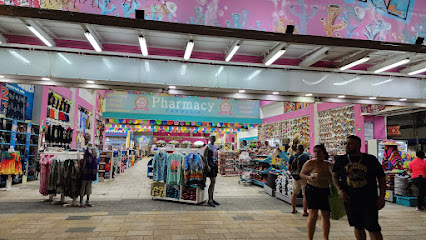
Sandmade Swimwear Playa del Carmen (Ferry)
Shop chic swimwear and beach accessories at Sandmade Swimwear in Playa del Carmen, the ultimate boutique for your sun-soaked adventures.
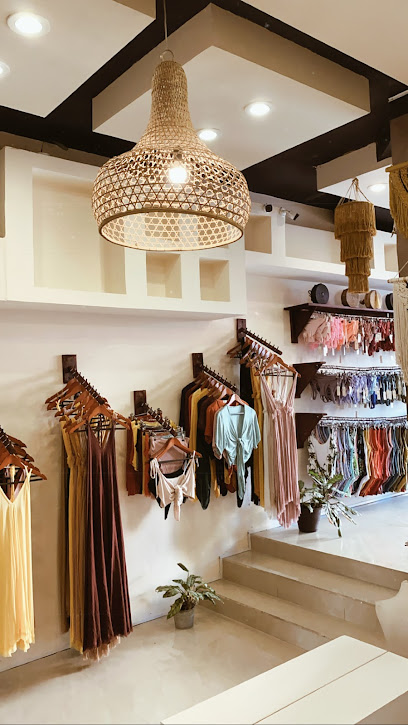
PlayaCar Hats, coverups
Discover stylish hats and vibrant coverups at PlayaCar Hats & Coverups, the perfect shopping destination for beach enthusiasts in Playa del Carmen.

Guess Accesorios
Explore the unique fashion accessories at Guess Accesorios, a charming boutique in the heart of Playa del Carmen, perfect for trendy travelers.

Essential bars & hidden hideouts
Señor Frog's Playa del Carmen | Muelle
Experience the vibrant nightlife and delicious flavors at Señor Frog's Playa del Carmen, where dining meets entertainment in a tropical paradise.

Barra Artesanal
Experience the vibrant craft beer culture at Barra Artesanal, a brewpub in Playa del Carmen offering unique flavors and a lively atmosphere.

Fat Tuesday Terminal Ferry Playa del Carmen 1st Floor
Discover the vibrant cocktail culture at Fat Tuesday in Playa del Carmen, where refreshing drinks and stunning views await every visitor.

Pool Bar
Experience ultimate relaxation at the Pool Bar in Playacar, Playa del Carmen, where refreshing drinks meet serene surroundings.

In Out Bar Music Fashion
Discover vibrant nightlife at In Out Bar Music Fashion in Playa del Carmen, where live music and stylish cocktails create unforgettable experiences.

Bar El Cenote
Discover Bar El Cenote in Playa del Carmen – a tropical bar offering refreshing cocktails and vibrant nightlife amidst lush surroundings.
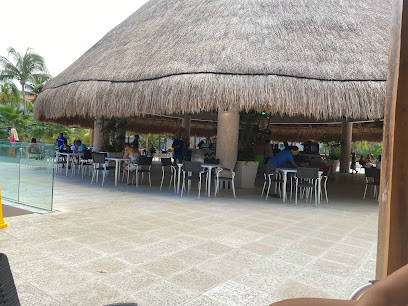
Pool Bar 2
Discover the serene oasis of Pool Bar 2, a perfect retreat in Playa del Carmen for refreshing drinks and relaxation by the pool.
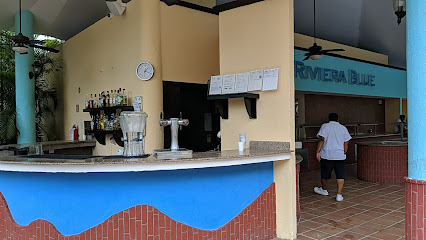
Bar Cubano
Experience the vibrant Cuban culture at Bar Cubano in Playa del Carmen, where every cocktail tells a story and the music keeps you dancing.

Bar Mariachis
Experience the vibrant nightlife at Bar Mariachis, a lively bar in Playacar, Playa del Carmen, known for its cocktails, live music, and welcoming atmosphere.

bar
Experience the vibrant nightlife at Playacar's premier bar, where refreshing drinks and lively ambiance await every visitor.

Local Phrases
-
- HelloHola
[oh-lah] - GoodbyeAdiós
[ah-dee-ohs] - YesSí
[see] - NoNo
[noh] - Please/You're welcomePor favor/De nada
[por fah-vor/deh nah-dah] - Thank youGracias
[grah-see-ahs] - Excuse me/SorryPerdón/Lo siento
[pehr-dohn/loh see-ehn-toh] - How are you?¿Cómo estás?
[koh-moh ehs-tahs] - Fine. And you?Bien. ¿Y tú?
[byen. ee too] - Do you speak English?¿Hablas inglés?
[ah-blahs een-glehs] - I don't understandNo entiendo
[noh ehn-tee-ehn-doh]
- HelloHola
-
- I'd like to see the menu, pleaseQuisiera ver el menú, por favor
[kee-see-eh-rah behr ehl meh-noo, por fah-vor] - I don't eat meatNo como carne
[noh koh-moh kahr-neh] - Cheers!¡Salud!
[sah-lood] - I would like to pay, pleaseQuisiera pagar, por favor
[kee-see-eh-rah pah-gahr, por fah-vor]
- I'd like to see the menu, pleaseQuisiera ver el menú, por favor
-
- Help!¡Ayuda!
[ah-yoo-dah] - Go away!¡Vete!
[veh-teh] - Call the Police!¡Llama a la policía!
[yah-mah ah lah poh-lee-see-ah] - Call a doctor!¡Llama a un doctor!
[yah-mah ah oon dohk-tohr] - I'm lostEstoy perdido
[ehs-toy pehr-dee-doh] - I'm illEstoy enfermo
[ehs-toy ehn-fehr-moh]
- Help!¡Ayuda!
-
- I'd like to buy...Quisiera comprar...
[kee-see-eh-rah kohm-prahr] - I'm just lookingSólo estoy mirando
[soh-loh ehs-toy mee-rahn-doh] - How much is it?¿Cuánto cuesta?
[kwan-toh kwehs-tah] - That's too expensiveEsto es demasiado caro
[ehs-toh ehs deh-mah-syah-doh kah-roh] - Can you lower the price?¿Puedes bajar el precio?
[pweh-dehs bah-har ehl pree-syoh]
- I'd like to buy...Quisiera comprar...
-
- What time is it?¿Qué hora es?
[keh oh-rah ehs] - It's one o'clockEs la una
[ehs lah oo-nah] - Half past (10)Las diez y media
[lahs dyehs ee meh-dee-ah] - MorningMañana
[mah-nyah-nah] - AfternoonTarde
[tahr-deh] - EveningNoche
[noh-cheh] - YesterdayAyer
[ah-yehr] - TodayHoy
[oy] - TomorrowMañana
[mah-nyah-nah] - 1Uno
[oo-noh] - 2Dos
[dohs] - 3Tres
[trehs] - 4Cuatro
[kwah-troh] - 5Cinco
[seen-koh] - 6Seis
[sehs] - 7Siete
[syeh-teh] - 8Ocho
[oh-choh] - 9Nueve
[nwheh-veh] - 10Diez
[dyehs]
- What time is it?¿Qué hora es?
-
- Where's a/the...?¿Dónde está...?
[dohn-deh ehs-tah] - What's the address?¿Cuál es la dirección?
[kwahl ehs lah dee-rehk-syohn] - Can you show me (on the map)?¿Puedes mostrarme (en el mapa)?
[pweh-dehs mohs-trar-meh (ehn ehl mah-pah)] - When's the next (bus)?¿Cuándo es el próximo (autobús)?
[kwan-doh ehs ehl prohk-see-moh (ow-toh-boos)] - A ticket (to ....)Un boleto (a ....)
[oon boh-leh-toh (ah)]
- Where's a/the...?¿Dónde está...?
History of Playacar
-
The area now known as Playacar was once part of the ancient Mayan civilization, which thrived in the Yucatán Peninsula. The Mayans established settlements in this region as early as 300 CE, utilizing its fertile land and proximity to the Caribbean Sea for trade and agriculture. Archaeological sites in Playacar, including the ruins of an ancient Mayan port, highlight the significance of this area in the broader context of Mayan culture and commerce.
-
Following the arrival of Spanish conquistadors in the early 16th century, the region underwent significant changes. The Mayan settlements were disrupted, and the area was claimed for Spain. During the colonial period, the Spanish established sugar plantations, which transformed the local economy and led to the introduction of African slaves who contributed to the labor force in the plantations. This era left a lasting impact on the culture and demographics of the region.
-
In the late 20th century, Playa del Carmen began to evolve from a small fishing village into a tourist destination. Playacar was developed in the 1990s as a planned community catering to the growing number of visitors attracted by the area's natural beauty and archaeological significance. This development marked a shift in the local economy from fishing and agriculture to tourism, fostering economic growth and modernization in the region.
-
Today, Playacar is not only known for its luxurious resorts and golf courses but also for its commitment to preserving its cultural heritage. The archaeological site within Playacar serves as a reminder of the area's rich history. Efforts to maintain and promote local traditions, such as the celebration of Mayan festivals and the preservation of local crafts, contribute to the cultural tapestry of Playa del Carmen and attract visitors interested in the region's history.
-
Playacar today is a vibrant neighborhood that reflects a blend of ancient Mayan heritage and contemporary Mexican culture. The community hosts a diverse population, including expatriates and locals, creating a cosmopolitan atmosphere. This diversity is evident in the culinary scene, art galleries, and community events that celebrate both Mayan and Mexican traditions, making Playacar a unique cultural enclave within Playa del Carmen.
Playacar Essentials
-
Playacar is conveniently located just south of Playa del Carmen's bustling downtown area. From the Cancun International Airport, travelers can take a direct shuttle or taxi to Playa del Carmen, which typically takes about 45 minutes. Once in Playa del Carmen, Playacar is easily accessible by walking, as it is only a 20-minute stroll from the main avenue, Quinta Avenida. Alternatively, local taxis are available for quicker access to Playacar.
-
Playacar is a relatively small neighbourhood, making it easy to explore on foot or by bicycle. Many resorts and hotels offer bicycle rentals. For longer distances, local taxis are readily available, and they operate on a metered system. Additionally, buses and colectivos (shared vans) run along the main roads, providing affordable transportation to other areas of Playa del Carmen.
-
Playacar is generally a safe neighbourhood for tourists, with a lower crime rate compared to other regions in Playa del Carmen. However, it's advisable to exercise caution, especially in less populated areas after dark. Tourists should avoid venturing into the nearby Colonia Centro area at night, as it has been reported to have higher crime rates, particularly related to petty theft and scams.
-
In case of an emergency, dial 911 for police, fire, or medical assistance. Familiarize yourself with the location of the nearest hospital, such as Hospital Playa del Carmen, which is equipped to handle various medical emergencies. It's advisable to have travel insurance that covers health emergencies. For minor health issues, pharmacies are available throughout Playacar.
-
Fashion: Do wear lightweight, breathable clothing suitable for the tropical climate, but avoid overly revealing outfits when visiting local towns. Religion: Do respect local customs, especially in religious sites; cover shoulders and knees when visiting churches. Public Transport: Do be polite and offer your seat to the elderly. Don't engage in loud conversations on public transport. Greetings: Do greet locals with a friendly 'Hola' and a smile. Eating & Drinking: Do try local cuisine at street vendors and restaurants. Don't drink tap water; always opt for bottled water.
-
To experience Playacar like a local, take a morning walk on the beach before the crowds arrive. Visit the local grocery stores for fresh fruits and snacks, and consider enjoying a meal at local eateries away from the tourist spots for an authentic taste of Mexican cuisine. Engage in conversations with residents, who are often eager to share local insights and recommendations. Don't forget to explore the lush nature trails around Playacar for a peaceful escape from the more tourist-heavy areas.
Nearby Cities to Playacar
-
Things To Do in Cozumel
-
Things To Do in Tulum
-
Things To Do in Cancun
-
Things To Do in Corozal Town
-
Things To Do in San Pedro
-
Things To Do in Orange Walk Town
-
Things To Do in Caye Caulker
-
Things To Do in Belize City
-
Things To Do in Campeche
-
Things To Do in Dangriga
-
Things To Do in Hopkins
-
Things To Do in San Ignacio
-
Things To Do in Tikal
-
Things To Do in Placencia
-
Things To Do in Roatán







